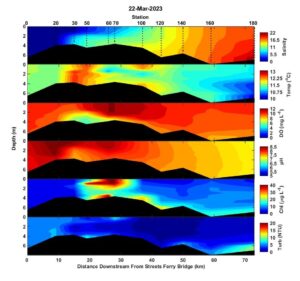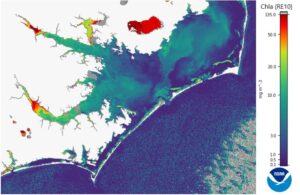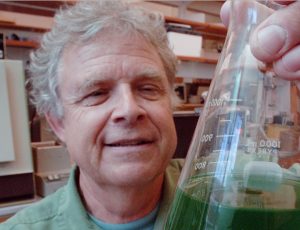Hi all,
Not much has changed since the last report. A spring cold front cooled temperatures by about 5 degrees and now temperature are near their seasonal norm. River flow has been low all March at about half its seasonal norm. Salinity at the mouth was about 17 at the surface and above 20 at the bottom. The tip of the salt wedge is still upstream of New Bern (station 30). Supersaturated oxygen levels at stations 60 and 70 were produced by a dense surface bloom (chl > 40) at those stations. The bloom extended upstream as a subsurface bloom to above station 50. I looked at station 60 under the microscope and saw a near monoculture of the dinoflagellate Prorocentrum minimum, the same dinoflagellate species that’s been blooming in this region of the Neuse for the past two months. Colleagues, Drs. Rick Stumpf and Alexandria Hounshell, at NOAAs National Centers for Coastal Ocean Science have provided us a bird’s eye view of bloom with their chlorophyll a product derived from Copernicus Sentinel-3 satelite imagery. It shows the highly concentrated nature of the bloom with maximum biomass just where the estuary starts to widen and residence time increases. It also shows an extension of the bloom along the north shore of the estuary down stream to Beard Cr. P. minimum hasn’t been associated with fish kills or toxin production. If history is a good predictor, the P. minimum bloom will be gone in the next few weeks. The satellite derived chlorophyll also shows other co-occurring blooms in the Pamlico River, Pungo River, and on Lake Mattamuskeet. I wouldn’t be surprised if the Pamlico River and Pungo River blooms were also P. minimum. I’ve sampled Mattamuskeet recently and its bloom is a 50:50 mix of diatoms and cyanobacteria.
Best,
Nathan



Leave a Reply